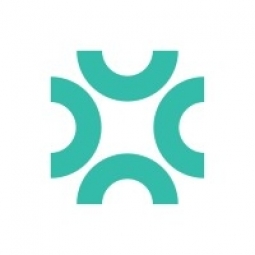Customer Company Size
Mid-size Company
Region
- America
Country
- Canada
Product
- Budget Maestro
Tech Stack
- Microsoft Dynamics GP
Implementation Scale
- Enterprise-wide Deployment
Impact Metrics
- Productivity Improvements
- Cost Savings
Technology Category
- Functional Applications - Enterprise Resource Planning Systems (ERP)
Applicable Industries
- Healthcare & Hospitals
Services
- Training
About The Customer
Wood’s Homes is a multi-service, non-profit children’s mental health center based in Calgary. With over 450 staff and 100 volunteers, Wood’s Homes provide 35 programs and services for 20,000 children and their families each year in Calgary, Lethbridge, Canmore, Strathmore, Fort McMurray and Fort Smith, N.W.T. Founded as an orphanage in 1914 by Reverend George Wood, Wood’s Homes is today recognized across Canada for its innovative services, some of which were the first in Canada, and is widely recognized as a knowledge and training center in the field of children’s mental health.
The Challenge
Wood’s Homes, a multi-service, non-profit children’s mental health center based in Calgary, was facing a significant challenge in managing its financial operations. As a large organization with over 450 staff and 100 volunteers, it provides 35 programs and services for 20,000 children and their families each year. The Finance Manager, Pat Keppler, was responsible for more than 122 financial statements, across 35 programs, many backed by 5-6 different funders. The organization was using a traditional spreadsheet-based approach to budgeting and forecasting which lacked the capabilities necessary to effectively manage the large volume of data. With over 7,000 account codes and associated individual budgets, the organization needed a more strategic financial tool to manage effective growth and continue to support the needs of its community.
The Solution
Wood’s Homes turned to Budget Maestro from Centage to better manage the budgeting & forecasting process, and lay the foundation for long term success. After just four days of in-person training, Pat had a working budget model and was up to speed and confident in the solution and her ability to leverage the technology to simplify and streamline daily responsibilities. The solution allowed Pat to manage various budgets based on a number of parameters – % of manager time/salary, number of staff, amount of funding allocations of support costs to all departments, etc. By automating the budget process, Pat could easily report on the funders requirements and, with the click of a button, prove the program budget is being allocated appropriately and/ or if there is a discrepancy or change needed, Pat could easily make that change which would cascade down and be reflected throughout the budget. The solution also allowed Pat to better manage balance sheets and cash flow fluctuations, something not possible with Excel, and develop accurate income forecasts.
Operational Impact
Quantitative Benefit

Case Study missing?
Start adding your own!
Register with your work email and create a new case study profile for your business.
Related Case Studies.

Case Study
Hospital Inventory Management
The hospital supply chain team is responsible for ensuring that the right medical supplies are readily available to clinicians when and where needed, and to do so in the most efficient manner possible. However, many of the systems and processes in use at the cancer center for supply chain management were not best suited to support these goals. Barcoding technology, a commonly used method for inventory management of medical supplies, is labor intensive, time consuming, does not provide real-time visibility into inventory levels and can be prone to error. Consequently, the lack of accurate and real-time visibility into inventory levels across multiple supply rooms in multiple hospital facilities creates additional inefficiency in the system causing over-ordering, hoarding, and wasted supplies. Other sources of waste and cost were also identified as candidates for improvement. Existing systems and processes did not provide adequate security for high-cost inventory within the hospital, which was another driver of cost. A lack of visibility into expiration dates for supplies resulted in supplies being wasted due to past expiry dates. Storage of supplies was also a key consideration given the location of the cancer center’s facilities in a dense urban setting, where space is always at a premium. In order to address the challenges outlined above, the hospital sought a solution that would provide real-time inventory information with high levels of accuracy, reduce the level of manual effort required and enable data driven decision making to ensure that the right supplies were readily available to clinicians in the right location at the right time.

Case Study
Gas Pipeline Monitoring System for Hospitals
This system integrator focuses on providing centralized gas pipeline monitoring systems for hospitals. The service they provide makes it possible for hospitals to reduce both maintenance and labor costs. Since hospitals may not have an existing network suitable for this type of system, GPRS communication provides an easy and ready-to-use solution for remote, distributed monitoring systems System Requirements - GPRS communication - Seamless connection with SCADA software - Simple, front-end control capability - Expandable I/O channels - Combine AI, DI, and DO channels

Case Study
Driving Digital Transformations for Vitro Diagnostic Medical Devices
Diagnostic devices play a vital role in helping to improve healthcare delivery. In fact, an estimated 60 percent of the world’s medical decisions are made with support from in vitrodiagnostics (IVD) solutions, such as those provided by Roche Diagnostics, an industry leader. As the demand for medical diagnostic services grows rapidly in hospitals and clinics across China, so does the market for IVD solutions. In addition, the typically high cost of these diagnostic devices means that comprehensive post-sales services are needed. Wanteed to improve three portions of thr IVD:1. Remotely monitor and manage IVD devices as fixed assets.2. Optimizing device availability with predictive maintenance.3. Recommending the best IVD solution for a customer’s needs.

Case Study
HaemoCloud Global Blood Management System
1) Deliver a connected digital product system to protect and increase the differentiated value of Haemonetics blood and plasma solutions. 2) Improve patient outcomes by increasing the efficiency of blood supply flows. 3) Navigate and satisfy a complex web of global regulatory compliance requirements. 4) Reduce costly and labor-intensive maintenance procedures.

Case Study
Cloud-based healthcare solution for Royal Philips
Royal Philips wanted to launch its cloud-based healthcare solution HealthSuite Digital Platform in China to deliver services to help cope with challenges related to urbanization and population growth. Philips wanted to achieve this goal by combining mobile, cloud computing and big data technologies. To bring this platform and product to market, Philips required cloud computing and local technical service capabilities in China, in addition to a flexible IT infrastructure that could handle user requests.








